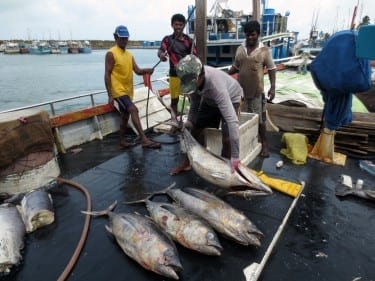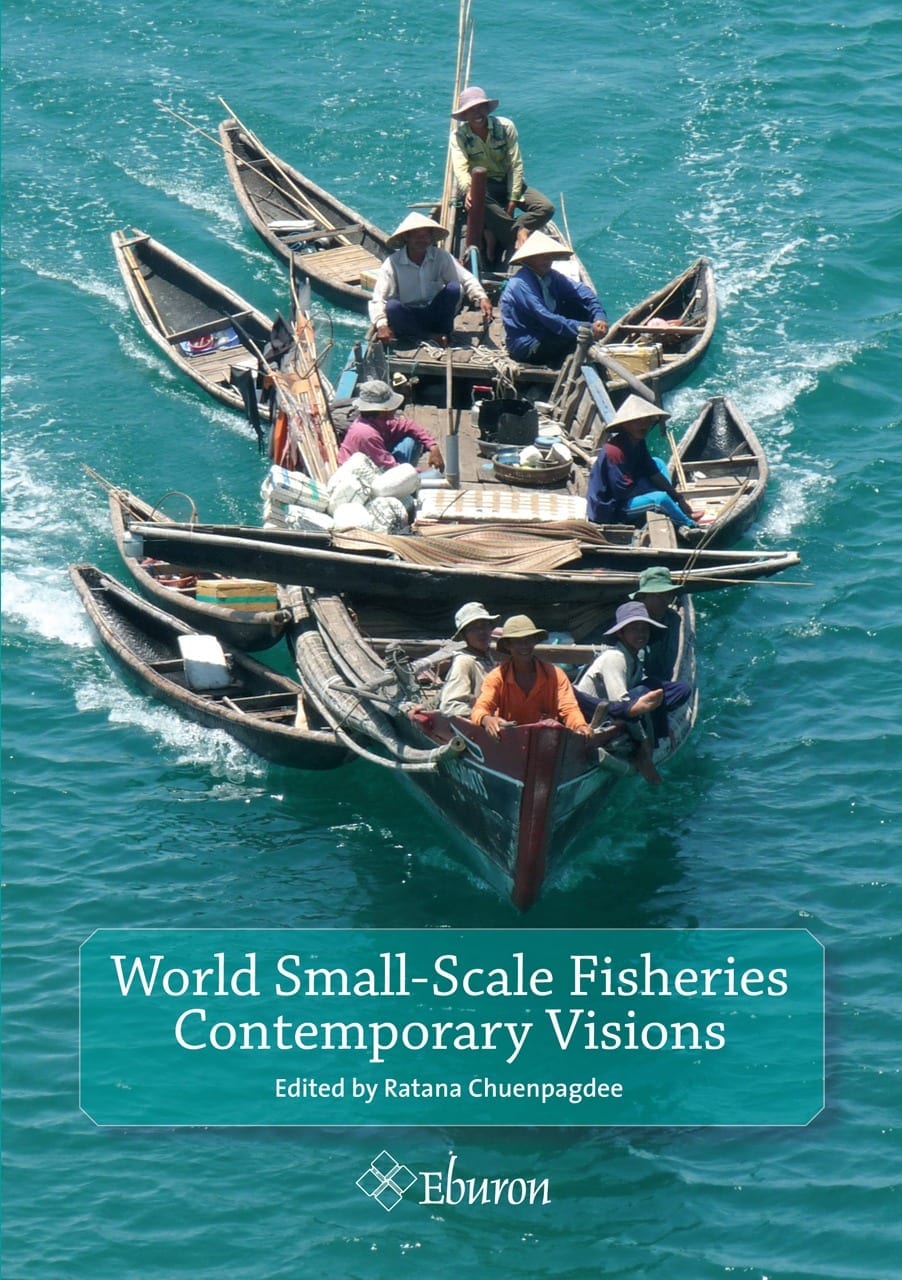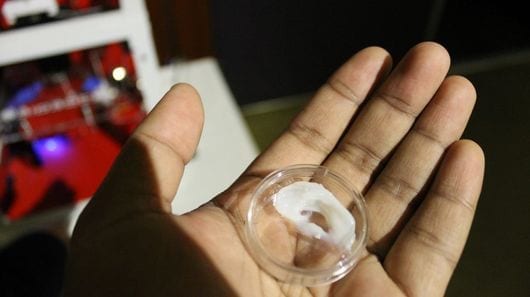
The Alaska salmon fishery is touted as one of the best in the world.
When measured with an ecological yardstick, it is — fish stocks are healthy and the fishery is certified by the Marine Stewardship Council as consistently meeting rigorous biological standards. Fish are individually counted as they swim upstream to ensure there are enough to breed.
But Alaska salmon falls short and lags behind some of the world’s fisheries in how it benefits local fishermen, processing workers and nearby rural communities, according to a new assessment that ranks the vitality of a fishery by looking at its economic and community benefits as well as its ecological health.
The Fishery Performance Indicators are the most comprehensive, global tool that considers social factors in addition to the usual biological measures when gauging a fishery’s health, said Chris Anderson, a University of Washington associate professor of aquatic and fishery sciences and a lead author of a paper published May 6 in the journal PLOS ONE describing the new methodology.
“This tool is designed to help us evaluate a fishery system’s performance toward achieving economic, community and ecological sustainability — the ‘triple bottom line,'” said co-author James Anderson, director of the Institute for Sustainable Food Systems at the University of Florida.
The authors found that globally, less healthy fish stocks usually lead to worse economic and community outcomes. However, they identified several cases where weaker stocks contribute importantly to the livelihoods of harvesters and their communities, and healthy fish stocks generated meager economic or community benefits.
“It is often assumed that economic and social benefits always follow healthy stocks, but this is rarely tested due to the lack of social data,” Chris Anderson said. “Our strategy was to develop a rapid assessment instrument that would organize the knowledge of local fishery experts to help us understand how harvesters and processors are performing economically and how the fishery is supporting its community. Economically effective management, access to high-value markets and having other income opportunities often play a larger role in human outcomes than stock health, especially in communities where fishing is a large share of the economy.”
Anderson and 26 co-authors at the World Bank and other universities and organizations around the world chose 61 fisheries as initial case studies to build the assessment tool.
Since 2010, they have visited and studied fisheries ranging from Alaska halibut and Oregon Dungeness crab to Norway cod, Louisiana shrimp, Nile perch in Uganda and blue swimming crabs in Indonesia to gather information and refine the tool.
Here’s how it works: The authors created dozens of measurable statements that capture the range of three performance indicators — ecology, economics and community. Example statements relate to the degree of overfishing, price trends, the capacity of processors to export to the U.S. and E.U., health care access for processing workers, captains’ earnings relative to other jobs in the region and the social standing of the crew.
Then, to characterize a fishery, the authors drew on the knowledge of local experts who work with fishermen, processors and community leaders, scoring each statement from one to five, with five being the best, based on carefully defined categories of performance. The responses in each category were then averaged.
The results are sometimes surprising. Alaska salmon ranks 4.88 (almost a perfect five) in its ecological performance, but it was a mere 2.86 in economics and 3.40 in community performance. Alternatively, Colombian artisanal shrimp only hit 2.25 for ecological performance but reached 4.20 for its community impact.
In the case of Alaska salmon, nearly all of the money businesses make selling the fish is spent catching it. The fishery operates as a derby, deploying several times the boats needed to catch the fish, and it’s expensive and financially risky to operate seasonal processors in rural Alaska.
Alternatively, in many developing countries a fishery whose stock is at a low level might still provide a key source of income within a community where resources are few.
Read more: Fishermen, communities need more than healthy fish stocks
The Latest on: Sustainable fishing
[google_news title=”” keyword=”Sustainable fishing” num_posts=”10″ blurb_length=”0″ show_thumb=”left”]
via Google News
The Latest on: Sustainable fishing
- Latrine removal operation on Smith River ushers in new era of human waste managementon April 27, 2024 at 11:39 am
The Smith River is unique and alluring to recreationists for its beauty, geology, wildlife and fishing. That appeal has caused river managers to adopt more sustainable management approaches as more ...
- US supports expansion of responsible, sustainable seafood sourcing in Iloiloon April 27, 2024 at 9:06 am
The Philippines is a major exporter of blue swimming crab. It is the second largest exporter of this species to the United States. However, there is a need for a responsible seafood sourcing to reduce ...
- Eight Sustainable Women's Surfwear Options We Tested For Summeron April 27, 2024 at 12:00 am
As summer nears in the Northern Hemisphere and water temps start slowly rising, you might be looking forward to the day you officially hang up that restrictive piece of neoprene you've been stuffing ...
- Adjudicator accepts B.C. groups' challenge to Alaska 'sustainable' fisheryon April 26, 2024 at 12:49 pm
The decision marks a major procedural hurdle, and gets the B.C. groups one step closer to challenging the Marine Stewardship Council to suspend Alaskan salmon as 'sustainable.' ...
- Fishing by dodgy fleets hurts economies, jobs in developing countries: Reporton April 26, 2024 at 6:13 am
Companies implicated in illegal, unreported and unregulated (IUU) fishing can have a serious impact on the economies, job opportunities and overall welfare of the developing countries in whose waters ...
- For a sustainable, transparent, responsible fishery sectoron April 25, 2024 at 12:56 am
The Party Central Committee’s Secretariat on April 10 adopted Directive 32 on strengthening the Party leadership on combatting illegal, unreported, unregulated (IUU) fishing and developing sustainable ...
- Leave the imported shrimp, take the local bivalves. Navigating sustainable seafood choiceson April 24, 2024 at 6:05 pm
Seafood and the Pacific Northwest go hand in hand. Maybe you're one of those people out fishing, clamming, and crabbing during the season. But if you're more of a shopper, your options aren't all ...
- What is the healthiest fish? This surprising No. 1 pick beat out salmonon April 24, 2024 at 2:16 pm
Fish is a high-protein, low calorie food. Sardines are the healthist fish. Here are other fish high in protein and omega-3's and 7 fish you should never eat.
- Good for your health and the environment: Why we should be eating oily fishon April 23, 2024 at 6:00 am
Oily fish lends itself to a multitude of uses in the kitchen, from simple grilling or griddling to more elaborate dishes like tataki or papillote. One advantage of oily fish is that it is easy to ...
- Why Is It So Hard to Find Local Fish (Even by the Water)?on April 23, 2024 at 2:04 am
Seafood caught in nearby waters has long been left out of the farm-to-table movement. But these people have set out to get it into stores and restaurants.
via Bing News










